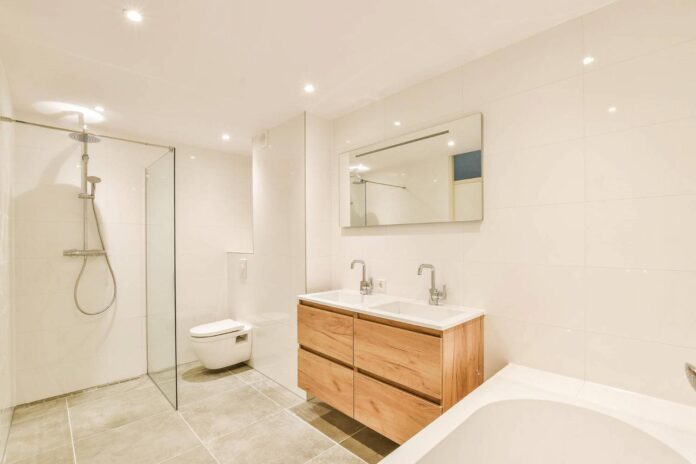As someone who’s worked with bathroom modules for years, I can tell you firsthand that manufacturing quality is paramount. It truly dictates how long your bathroom module will last and how well it will function. A solid production process is non-negotiable; it ensures every piece meets the required standards, cutting down on defects and early wear and tear. The materials used, the precision of assembly, and the quality control measures all play a huge role.
How Manufacturing Quality Impacts the Durability and Functionality of Bathroom Modules
For example, using high-quality materials like rust-proof metals, strong ceramics, and water-resistant composites can seriously extend the life of your module and protect it from moisture damage. I’ve seen modules built with cheaper materials fail within a couple of years, while those with quality components have lasted over a decade with minimal issues. According to industry statistics, modules using premium materials can increase lifespan by up to 50%.
Manufacturers that use advanced techniques like automated assembly lines and precise molding tend to produce more consistent and structurally sound products. Rigorous testing – pressure resistance, waterproofing, and load-bearing capacity – is essential. This ensures the modules can handle daily use without falling apart. Make sure the manufacturer complies with international building codes such as ISO 9001 standards and has the necessary certifications. This makes integrating the modules into large projects much smoother, as you won’t have to worry about long-term performance issues. Detailed testing, as outlined by organizations like the American Society for Testing and Materials (ASTM), ensures each module meets stringent quality benchmarks.
Also, don’t underestimate the importance of functional elements like plumbing, ventilation, and surface finishes. A well-engineered module prevents leaks, mold, and drainage problems. Paying attention to these details during production translates to lower maintenance costs and happier users down the line. A study by the National Home Builders Association found that proper ventilation systems can reduce mold growth by up to 75%. When you’re choosing a manufacturer, always check their quality assurance processes, material specs, and safety compliance to ensure the modules meet your expectations both aesthetically and functionally. Consider manufacturers who offer warranties, as this is often a reflection of their confidence in the product.
Comparing Prefabricated Bathroom Solutions: Custom vs. Standardized Modules
When you’re choosing a bathroom module manufacturer, one of the first big decisions you’ll face is whether to go with custom or standardized modules. From my experience, both have their pros and cons, and the best choice really depends on the specifics of your project.
Custom Bathroom Modules: Tailored to Your Needs
Custom bathroom modules offer a ton of flexibility. You can tailor the layout, materials, and finishes to match your exact aesthetic and functional needs. This is especially useful for high-end hotels, luxury apartments, and healthcare facilities where you need something unique. I’ve worked on projects where we needed to integrate specific accessibility features or match a very particular design style, and custom modules were the only way to go. However, keep in mind that customization usually means longer production times and higher costs due to the extra design and manufacturing work involved. For instance, a bespoke design might increase costs by 20-30% and extend the timeline by several weeks.
Standardized Bathroom Modules: Efficiency and Cost-Effectiveness
Standardized bathroom modules, on the other hand, are all about efficiency and cost-effectiveness. They’re pre-designed and mass-produced to fit common dimensions and layouts. These are great for large-scale projects like hotels, student housing, and commercial buildings where you need uniformity and a quick installation process. Standardized modules reduce lead times and allow for faster on-site assembly, which can significantly cut down on labor costs and minimize disruptions. Utilizing standardized modules can reduce project completion time by approximately 40%, resulting in substantial savings.
Here’s a quick comparison to help you decide:

When you’re weighing your options, think about your budget, project timeline, how complex the design is, and what your long-term maintenance needs are. For example, consider whether the design limitations of standardized modules will impact accessibility or user experience and how you can mitigate these limitations. Manufacturers that offer both custom and standardized solutions can give you advice on the best choice based on your project’s goals. Seek out manufacturers with certifications for sustainable practices to align with environmental goals. Understanding the upsides and downsides of each type of module will help you make a decision that fits your operational and architectural requirements.
Choosing the right manufacturer of bathroom modules is crucial for ensuring quality, durability, and efficient installation in your project: https://domczar.co.uk/. It’s a decision I’ve seen make or break projects, so it’s worth taking the time to get it right. Before making a final decision, consider downloading a detailed guide on bathroom module selection or requesting a consultation to explore tailored solutions. Clear communication with your chosen manufacturer is key to a successful outcome.

| [donate]
| Help keep news FREE for our readersSupporting your local community newspaper/online news outlet is crucial now more than ever. If you believe in independent journalism,then consider making a valuable contribution by making a one-time or monthly donation. We operate in rural areas where providing unbiased news can be challenging. |

















